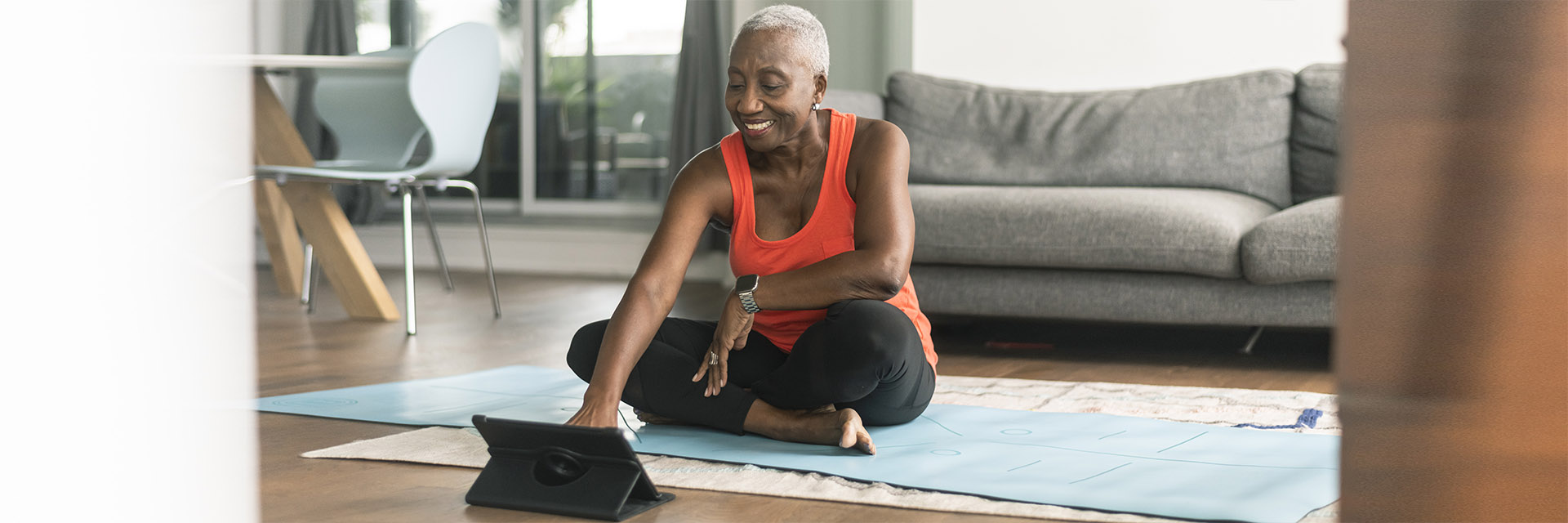Between the extreme temperatures this summer and the ongoing rise and fall of COVID cases, there have been several reasons recently for staying in the comfort of your home. And with no way to predict when new waves of the pandemic will hit and with colder months ahead this winter, there is no end in sight for people sometimes making the choice to stay indoors at home. But there’s a crucial difference between staying at home and sitting at home. A lack of activity can have some negative effects on your health, especially on your joints.
“Exercise is important for your joints and other aspects of your health, such as weight management,” says Steven Ogden, M.D., orthopedic specialist with Texas Hip and Knee Center, a Texas Health Physicians Group practice in Fort Worth. “Avoiding movement because of joint pain will not improve the pain. The good news is that it doesn’t take much effort to get some benefit.”
Stay-at-home Strategies
Dr. Ogden recommends having a plan for indoor movement until you are ready to resume outdoor activity. Try these tactics to keep you moving while staying cool at home:
- Start small. Just walking in place or walking around your house is a good start.
- Stretch. You can do some simple stretches right from your chair. (Read on for specific stretches.)
- Tools for training. Using therapeutic bands for resistance can increase the impact of your stretches.
- Bring the outdoors in. You can get the benefit of outdoor activity while staying inside with low-impact exercise like walking on a treadmill or riding a stationary bike.
“Just moving for five to 10 minutes can make a difference,” Dr. Ogden says.
The Muscle-Joint Connection
Muscle tightness can worsen joint pain. Working specific muscles will have benefits for the connected joints. Boost your flexibility with these exercises:
Hamstring Stretches
When the hamstrings (the muscles located around the back of the thigh) are properly stretched, knee pain can improve. If you have back or sciatica pain, consult a doctor before trying these exercises.
- Sitting hamstring stretch:
- While in a sitting position, keeping your back straight, reach for your toes.
- Hold for 15-30 seconds.
- Repeat three times.
- Standing hamstring stretch:
- While standing on your feet, lean over carefully and try to reach your toes.
- Hold for 15-30 seconds.
- Repeat three times.
Quadriceps Stretches
Quadriceps are muscles on the top of the thigh that work to extend, or straighten, the knee joint. For those experiencing knee pain, it’s important to strengthen your quadriceps.
- Sitting quadricep stretch
- Sit in a chair with your feet on the floor.
- Bring one knee out straight and hold it for 10-20 seconds.
- Do the same thing with the other leg.
- Repeat three times.
- Chair quadricep stretch: Get up and down slowly from your chair without using your arms.
Hip Stretches
The gluteal muscles, or buttocks, help stabilize the pelvis and take pressure off the hip joint. To get those hip muscles moving, do some gluteal stretches.
- Gluteal stretch
- While sitting or lying down, bring your knees to your chest and hold for 10-20 seconds.
- Try to squeeze your gluteal muscles together to tighten them while doing this exercise.
- Leg lifts
- While standing, bring your leg out to the side away from your body.
- Hold it for 10-20 seconds.
- Repeat with the other leg.
- Do three sets.
To reduce discomfort after exercising, try icing the area. Ice is naturally anti-inflammatory, but don’t put ice directly on your skin without a barrier like a cloth.
Moving Toward a Solution
Joint pain can have many underlying causes. Joints can be inflamed, stiff or painful due to chronic conditions such as arthritis, from an acute injury or just from the natural aging process.
“If you aren’t seeing improvement from these at-home strategies, or you are unable to participate in daily activities or hobbies, it’s time to see a doctor,” Dr. Ogden explains. “An orthopedist can help determine the root cause of pain, develop a treatment plan and help prevent future issues so you can keep moving.”
Take our joint health assessment to measure your hip or knee pain and get moving in the right direction. Or find a joint care specialist who can assist with your joint pain.

